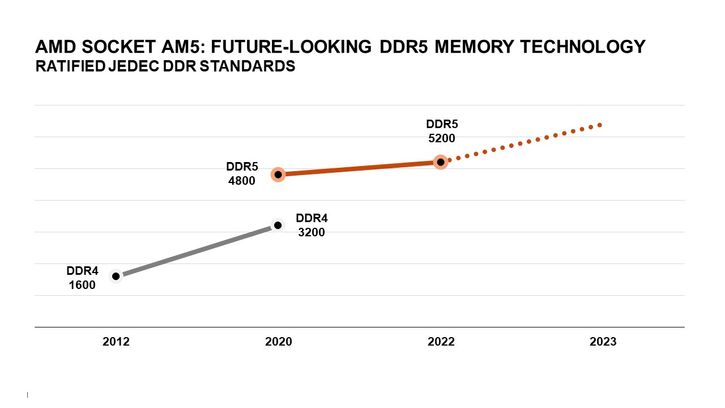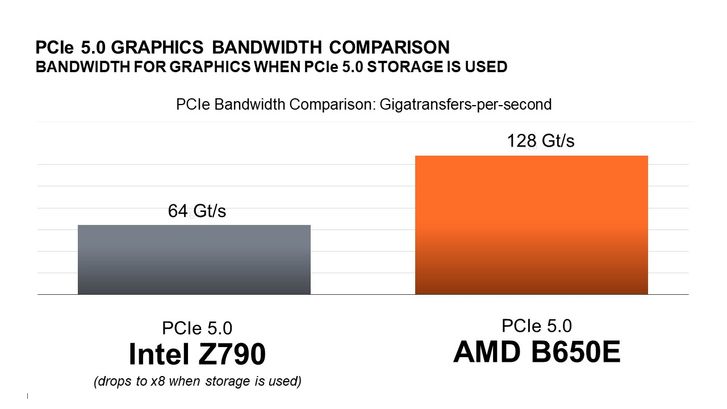Let’s Talk About Platforms – Costs, Longevity, and Value
It may be strange to think of it this way, but your PC platform is either an investment, or a liability.
If it’s an investment, it will keep delivering benefits over a period of years; if it’s a liability, it will limit you as time goes on, and stifle the value of your PC over time. So what benefits or limitations are we talking about?
It’s important to remember that before AMD Ryzen processors, PC users expected to have to buy a whole new platform when they invested in a new processor generation. Some motherboards would allow for one generational upgrade, but support was very limited. Platforms were liabilities, with no future upgrade value.
When AMD Ryzen processors were launched, they arrived in conjunction with AMD Socket AM4 motherboards. At the time, the company committed to long-term support of that platform. AMD proved that platforms could last a long time, giving users the ability to keep their system on the bleeding edge of performance with multi-generational upgrade support over a period of years. This strategy has proven to be a great benefit for PC users. Some people who invested in a Ryzen 3 1300 processor and AM4 platform in 2017 have the ability to upgrade to the Ryzen 7 5800X3D in 2022, just by purchasing a new processor! These platforms proved to be a great investment.
Year Introduced: | 2016
(OEM only) | 2017 | 2018 | 2019 | 2020 | 2020 | 2021 |
AMD Socket AM4 Supports: | 7th gen AMD A-Series | AMD Ryzen™ 1000 Series | AMD Ryzen™ 2000 Series | AMD Ryzen™ 3000 Series | AMD Ryzen™ 4000 G-Series | AMD Ryzen™ 5000 Series | AMD Ryzen™ 5800X3D |
Similarly, AMD has committed years of future support for the new AMD Socket AM5 today in 2022, just like it did with Socket AM4 back in 2016. AMD’s new platform is teed up for years of performance growth, built to be compatible with next-gen processors that haven’t even been announced yet, with upgrade options that will include game-changing AMD V-Cache technology.
The competition, on the other hand, makes no commitments to future upgrade support on their latest LGA 1700 platform. Intel has consistently limited platforms to one or two processors, so users who buy a 12th or 13th Gen Intel Core platform will likely have to spend a lot more money on a whole new motherboard if they want to upgrade to a 14th Gen processor or beyond.
The bottom line: an investment in the right platform can save you hundreds of dollars or even much more over time. Even if you have to spend a few more dollars on an AMD Socket AM5 platform, it is well worth the investment compared to a dead-end Intel socket with no future upgrade support.
IS YOUR PC PLATFORM BUILT FOR MAXIMUM FUTURE PERFORMANCE?
People who want the best performance from their PCs know that there’s more than the processor to consider. For instance, the storage device has a massive impact on boot times and how long you have to wait to launch applications, or load data within an application – like how long it takes to load levels in games. Similarly, the graphics card is critical to squeeze high frame rates and smooth gaming performance from the system.
Once again, let’s consider what AMD did with AMD Socket AM4 in 2016: To keep the platform current for years, the company designed the platform with next-gen DDR4 memory support. This future-looking feature kept the platform on the cutting edge, and even now in 2022 people who invested in the platform years ago are enjoying these benefits.

This is why the new AMD Socket AM5 platform is laser focused on the goal of being the most future-ready platform today. The engineers at AMD designed the platform with true, dedicated DDR5 memory and PCIe 5.0 support for the maximum x16 graphics and up to 2 x4 lanes for storage. This means that when PCIe 5.0 graphics cards and storage devices are available in the near future, the AMD Socket AM5 platform is built ready to deliver full bandwidth to those devices.

The newest Intel platforms, on the other hand, have severely limited PCIe 5.0 support. In fact, when you install a PCIe 5.0 graphics card and storage device on a system with a 13th Gen Intel processor, the graphics bandwidth gets slashed to 50% (down to a x8 link). Some Intel platforms are also limited to DDR4 memory, which can limit game performance. These limitations mean that the newest Intel platforms are not an investment, but are more of a liability as time goes on.

WHATS THE BEST PC PLATFORM INVESTMENT?
After discussing the benefits of AMD Socket AM5 motherboards, it’s hard not to favor the AMD B650E motherboard. The reasonably priced AMD option easily bests the top-of-the-line Intel Z790 motherboard from a longevity perspective. Whether you’re considering future processor upgrades, future graphics upgrades, and future storage upgrades, the B650E chipset is positioned to be your best investment.
For consumers who want the cream of the crop, an argument can be made for the premium X670E, especially if you’re the kind of user who values maximizing the number of PCIe lanes and USB ports in your system. The X670E chipset also delivers maximum power for overclocking, for enthusiasts interested in exercising that feature to the fullest. But raw PCIe 5.0 bandwidth is identical between the B650E and X670E chipsets.
MOTHERBOARD CHIPSET | TOTAL PCIe 5.0 LANES | GRAPHICS PCIe 5.0 LANES
when PCIe 5 storage is used | FUTURE GENERATION CPU SUPPORT COMMITMENT? |
AMD B650E & X670E | 24 | 16 | YES |
INTEL X790 and X690 | 16 | 8 | NO |
For users who want to get into AMD Socket AM5 longevity at a lower price, there are a number of new B650 motherboard options expected in market in late November 2022. These deliver the same overclockability and multi-year processor upgrade path that makes all AM5 chipsets such an attractive long-term investment.
At the end of the day, PC buyers will be best served with a platform that promises years of high-performance upgradability, not one that has to be replaced with next processor upgrade. Dead-end platforms might save you a few dollars in the short term, but great platform investments can save you hundreds or more over time. That’s the strength of AMD Socket AM5.